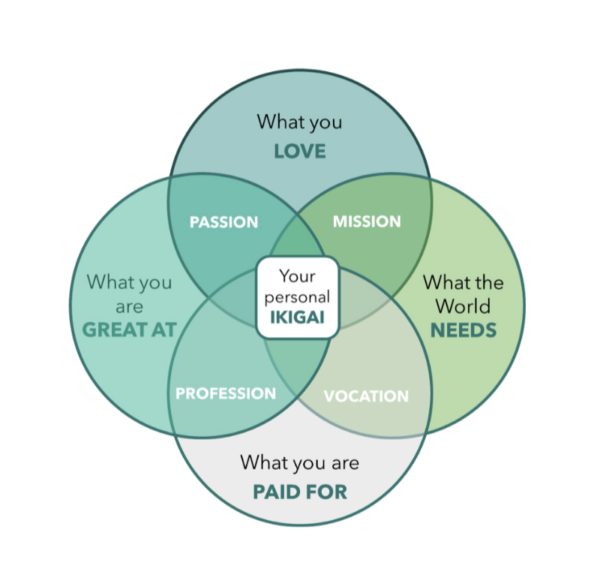Trending
Top CFO Tactics for Reducing Software Spend & Consolidating Systems
/in I'm Looking for Strategic Planning Tips, Software Stack for Growth Companies, Systems & Processes, Trending, Featured on Home/by Matt McCue4 Considerations To Craft Your Company’s Equity Strategy
/in I Need to Retain my Top Performers, Secondary Liquidity, Developing Your Team, Talent, Trending, Equity & Compensation, Featured on Home/by Matt McCueAdvancing Your Influence: Strategies for CFOs
/in CFO Leadership, Leadership & Vision, Developing Your Team, Talent, Trending, Featured on Home/by Matt McCueShare this entry

How People Leaders Can Invest In Their Own Growth
Use these mindset tools to find your purpose, reframe challenges as opportunities, and be more productive in your day.
In recent years, CHROs have steered their organizations through unprecedented challenges while facing immense pressure to deliver results. Many experienced CHROs now grapple with burnout and contemplate a transition from the field. In a recent survey of CHROs in The Circle, more than half of respondents said the level of responsibility and pressure in their role has increased over the past two years. The work of scaling a startup was once exhilarating; now, amid sluggish growth, it can feel like navigating a ship in increasingly shallow waters.
In a conversation with the CHRO|Circle, Adele Rom, Partner and Organizational & Leadership Development Consultant at Evolution, shared four ways to uncover opportunities for continued personal and professional growth at a time when company growth may be stagnant.
1. Identify Your Ikigai
To anchor yourself around what is important, Adele recommended looking to the Japanese concept of ikigai, which means “that which gives your life worth, meaning, or purpose.”
“Your ikigai is the intersection where our passion and talent converge with what others need and are willing to pay for.” – Adele Rom, Partner and Leadership Development Consultant and Coach, Evolution

Image courtesy of Adele Rom.
Four questions help uncover this intersection:
- What are you great at?
- What do you love?
- What does the world need?
- What can you be paid for?
The answers to these questions can help you better understand your professional purpose and achieve the meaning you are looking for in your job (and life).
Your personal “sweet spot,” said Adele, is to find something that you do well, that brings you joy, that the world needs now, and from which you can earn a sustainable living.
2. Recognize What You Might Be Neglecting
After identifying your ikigai, you can start assessing how much time you’re dedicating to the various quadrant’s intersection (passion, mission, profession, or vocation). Perhaps more importantly, you can also identify which area you may be neglecting. “The one you are not putting enough energy into provides an opportunity for growth and renewed energy,” said Adele.
One way to do this is to measure the time and energy you spend on parts of your ikigai. Adele noted that this exercise often reveals where you’re spending far less time than you would like, so it’s an opportunity to carve out “sacred yes” time to invest in these pursuits that fuel your purpose. “When we schedule protected time for these things, we make sure we spend time on what is important to us,” she said.
For example, after identifying your ikigai, you may realize that family or community is where you find your greatest joy, but you are sacrificing time with them due to burnout or unconscious time wasters in your job. Perhaps this insight might lead you to consider fractional work and start having conversations with consultants in your field. Or you could realize that you spend the majority of your time working and with your family, and that leaves you with no free time of your own for volunteering pursuits that align with what you believe the world needs. This reflection may spark a similar exploration of how to turn that volunteering into a “vocation” (something that the world needs and you are paid to do).
If it sounds impossible to fulfill all four parts of the ikigai, get some inspiration from Gen Z. “They want and are intentionally seeking out all four,” said Adele. “This is the lens the younger generations are looking through when they think about their work and career.”
3. Reframe the Challenges
Challenges are a fact of corporate life. To navigate the chasm between challenges and the ideal state, Adele recommended we reframe situations that could feel negative into more positive opportunities. This common mindset hack encourages us to ask: “Why is this happening FOR me?” instead of “Why is this happening TO me?”.
For example, if you’ve accepted a job where you were told you would have a team of five, but a RIF or re-org left you with a single direct report, you could dwell on the unexpected change and severe lack of resources. However, if you’re passionate about mentorship and have struggled to have the bandwidth to grow and develop an entire team in the past, this sudden shift to a single direct report means that you can put all you have into mentoring and managing that person. Your impact and relationship can be much deeper.
Whenever you encounter a new challenge, spend time looking for a positive opportunity for growth and learning.
4. Be Realistic About What Can Actually Get Done in a Day
CHROs have a full plate and often an unpredictable workload. It can feel like you have a tremendous workload to complete each day. With so much to accomplish, it can be easy to consistently overschedule yourself.
“HR leaders often think they can accomplish more than what is realistically feasible in a day. This is due to the high volume of interruptions that are inherent to the people and culture space.” – Adele Rom, Partner and Leadership Development Consultant and Coach, Evolution
To maximize focus and productivity — and ensure your to-do list is realistic — Adele recommended that rather than thinking about your day as a 24-hour block of time, break the day up into four-hour segments: 6 a.m. to 10 a.m., 10 am. to 2 p.m., and 2 p.m. to 6 p.m and 6 p.m. to 10 p.m. “We find that, if we segment our time in four-hour blocks, we are more intentional and focused and often get a lot more done,” said Adele. “It helps us have boundaries around distractions and time/energy wasters.”
Some examples of this could include using that 6 a.m. to 10 a.m. block for yourself (morning well-being routines and family), or high-priority deliverables (the first items you do when you start work). The 10 a.m. to 2 p.m. block could be used for leading and running meetings to help your team move their key assignments forward. The 2 p.m. to 6 p.m. block could include working on focused, important projects and then finishing the day with downtime, family, and relationships.
Rather than looking at your schedule as one ongoing to-do list, you have strategically structured your day in a more focused and manageable way, around near and long-term work priorities, personal time, and your own well-being.
The Takeaway:
Over the past two years, CHROs have felt more responsibility and pressure in their roles. While CHROs are leading their organizations through various challenges, they must not forget to take time for their personal and professional growth. These tactics will allow you to find your purpose, lead a fulfilling work life, reframe challenges as opportunities, and be more productive.
Apply to join The Circle to participate in conversations like this one within a private leadership community of CXOs.
Related Blog Posts

4 Considerations To Craft Your Company’s Equity Strategy

Advancing Your Influence: Strategies for CFOs




